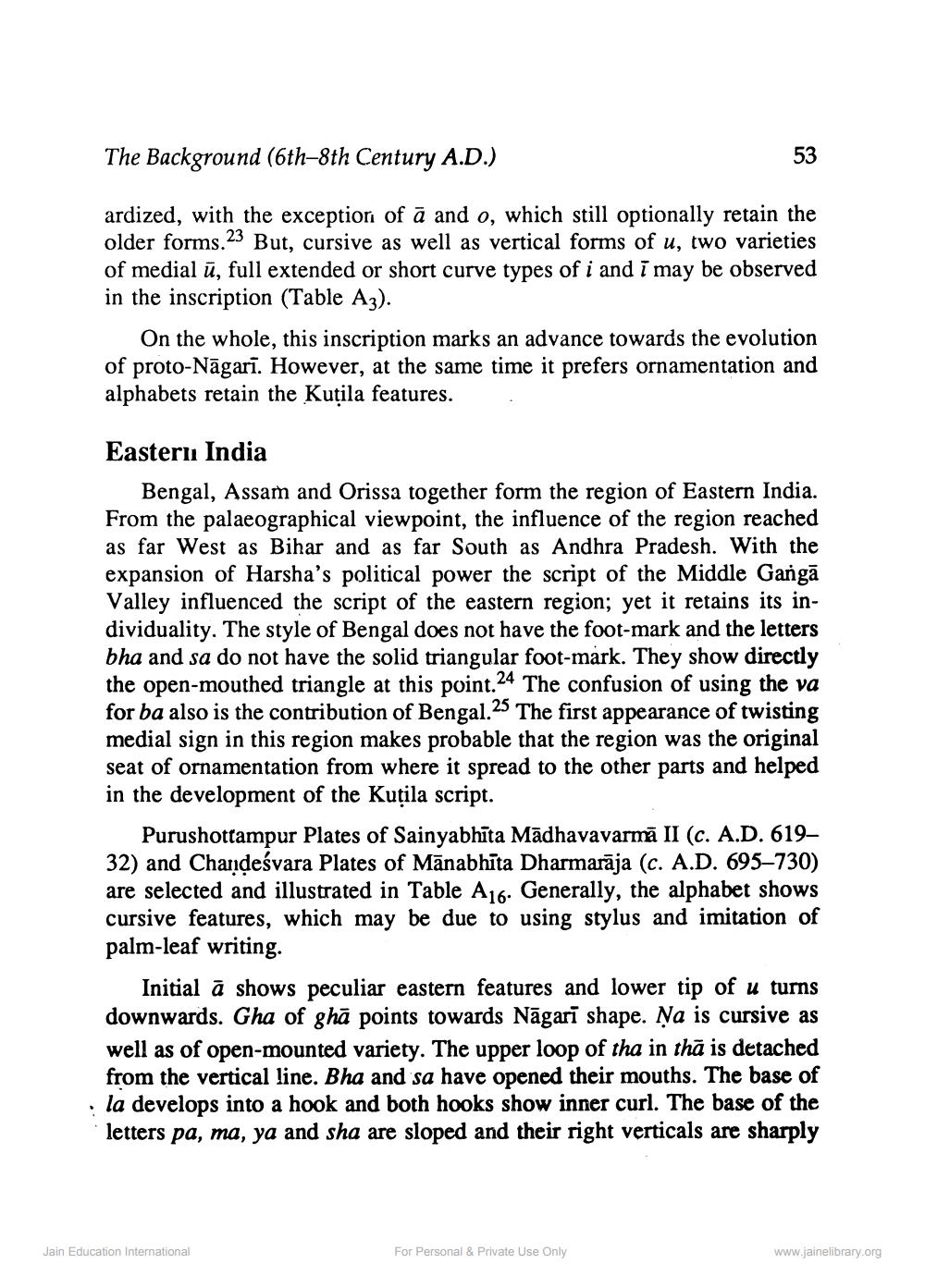________________
The Background (6th-8th Century A.D.)
3
ardized, with the exception of a and o, which still optionally retain the older forms.23 But, cursive as well as vertical forms of u, two varieties of medial ū, full extended or short curve types of i and i may be observed in the inscription (Table A3).
On the whole, this inscription marks an advance towards the evolution of proto-Nāgarī. However, at the same time it prefers ornamentation and alphabets retain the Kutila features.
Eastern India
Bengal, Assam and Orissa together form the region of Eastern India. From the palaeographical viewpoint, the influence of the region reached as far West as Bihar and as far South as Andhra Pradesh. With the expansion of Harsha's political power the script of the Middle Gangā Valley influenced the script of the eastern region; yet it retains its individuality. The style of Bengal does not have the foot-mark and the letters bha and sa do not have the solid triangular foot-mark. They show directly the open-mouthed triangle at this point.24 The confusion of using the va for ba also is the contribution of Bengal.25 The first appearance of twisting medial sign in this region makes probable that the region was the original seat of ornamentation from where it spread to the other parts and helped in the development of the Kutila script.
Purushotrampur Plates of Sainyabhīta Mādhavavarmā II (c. A.D. 619– 32) and Chandeśvara Plates of Mānabhīta Dharmarāja (c. A.D. 695–730) are selected and illustrated in Table A 16. Generally, the alphabet shows cursive features, which may be due to using stylus and imitation of palm-leaf writing.
Initial ā shows peculiar eastern features and lower tip of u turns downwards. Gha of ghā points towards Nāgari shape. Ņa is cursive as well as of open-mounted variety. The upper loop of tha in thā is detached from the vertical line. Bha and sa have opened their mouths. The base of la develops into a hook and both hooks show inner curl. The base of the letters pa, ma, ya and sha are sloped and their right verticals are sharply
Jain Education International
For Personal & Private Use Only
www.jainelibrary.org




